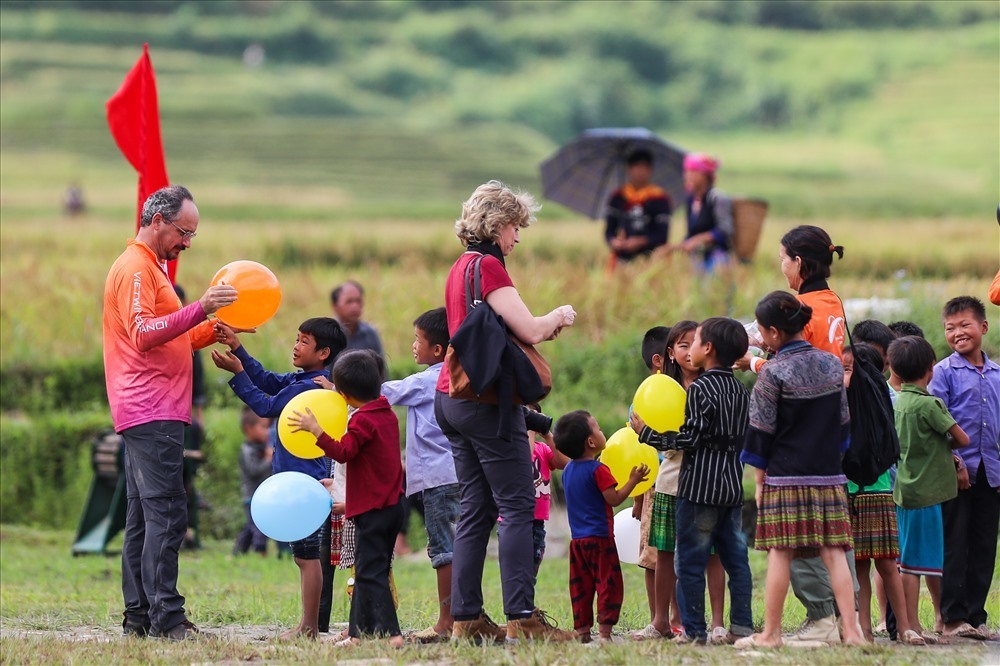Prices bottom out
Vu The Binh, deputy chair of the Vietnam Tourism Association, when the first Covid-19 outbreak broke out, no one could imagine that it would have such a serious impact.
Tourism experts then predicted that it would last several months. But it turned out to be more powerful than previously thought.

As the impact has been severe, the solutions to stimulate demand need to be special. Binh said while stimulating demand, Vietnam needs to think of solutions for ‘living together with the pandemic’.
Binh believes that the demand stimulus measures applied in the first campaign are no longer suited to the new conditions. Travel firms have slashed tour fees as sharply as possible and the tour fees cannot be further reduced.
| The second demand stimulus campaign should be in parallel with digital transformation, and tourism should develop into a digital business field, to both develop the economy and control the spread of COVID-19. |
Binh said it would be better to focus on improving service quality.
“The service must be the best, and the products must be the newest, most attractive and most original,” Binh said.
The second demand stimulus campaign should be in parallel with digital transformation, and tourism should develop into a digital business field, to both develop the economy and control the spread of COVID-19.
“Travel firms should prepare well, so that they won’t be surprised if the epidemic recurs and will have experience to deal with it again,” Binh said.
Sharing the same view, Nguyen Hoai Thu from Saigontourism, said that travel firms should not think too much about slashing tour fees, but focus on how to best serve travelers. Travellers will be the best media channel to help Vietnam’s tourism recover by the end of the year.
“If travelers feel secure and have safe trips, this will be a victory for travel firms which will help them recover and develop,” Thu said.
Solutions
According to deputy director of the HCM City Tourism Department Vo Thi Ngoc Thuy, the city will have two approaches when stimulating demand – price and consumer demand.
.
The city will encourage city to travel within the city area and from the city to other provinces through cooperation programs with 13 provinces in Mekong Delta, 5 provinces in the eastern parts of the southern region, 8 provinces in the northwest, 8 provinces in the northeast and five provinces in the central region.
Meanwhile, according to a Hai Phong City tourism department’s leader, there should be links for tourism development, not only links among regions, but also within the tourism industry, among travel firms, accommodation service providers, restaurants and transportation firms. The internal links were disrupted because of the Covid-19 outbreak.
The official went on say that it is necessary to change people’s travel habits and turn disadvantages into advantages.
For a long time, travel firms organized tours to the northern region in seasons and there was no traveler in winter. It would be better to change the habit by designing tours to experience the winter in the north. People can also take spiritual tours and go sightseeing in winter.
CEO of Flamingo Redtours Nguyen Cong Hoan also said the second demand stimulus campaign should focus on added value and tourism product specialization.
Instead of asking localities to stimulate demand, agencies should choose beautiful landscapes to stimulate demand first, such as autumn in Hanoi, the 1010th anniversary of Thang Long – Hanoi, the ripening rice on terraced fields in the northwest, the flooding season in the Mekong Delta, and the wild sunflower season in the Central Highlands.
Communication about safe destinations
“It’s safe now, let’s travel,” said Ha Van Sieu, deputy general director of the Vietnam National Administration of Tourism (VNAT) at a seminar on stimulating domestic travel on September 24.
He stressed that safety is the most important factor that travel firms need to pay attention to if they want to persuade people to travel.
A survey conducted by the Tourism Advisory Board (TAB) found that 41 percent of those polled said they are willing to travel in September – November. Of this, 46.7 percent of people want short tours (2-3 days) and more than 70 percent chose to travel by air.
Around 57 percent of people still said they were reluctant to travel to places that were once Covid-19 epicentres. Therefore, safe destinations will be the major factor to affect their travel decisions (56 percent).
Hoan agreed that media campaigns about safe destinations is the key task, but believes that it is state agencies, not local agencies and travel firms, which should do this.
Fear of COVID-19 have overwhelmed people’s travel hobbies. Pham Ngoc Thuy, director of the Quang Ninh Tourism Department, stressed there must be creative and breakthrough solutions to attract travelers.
Ngoc Ha



